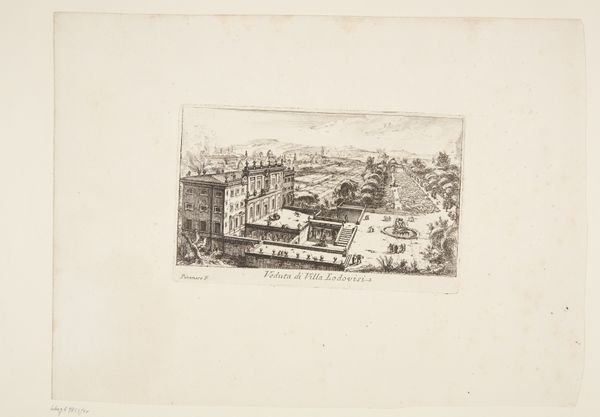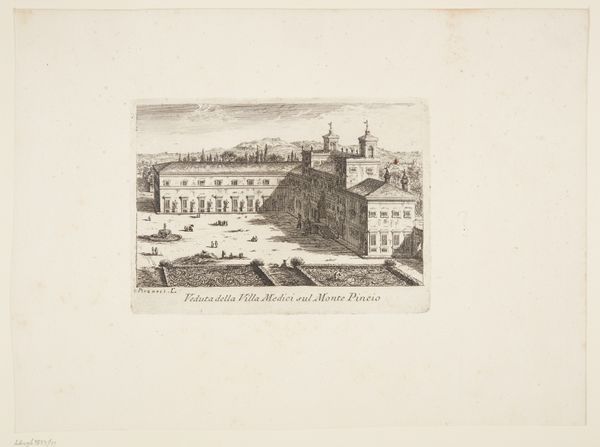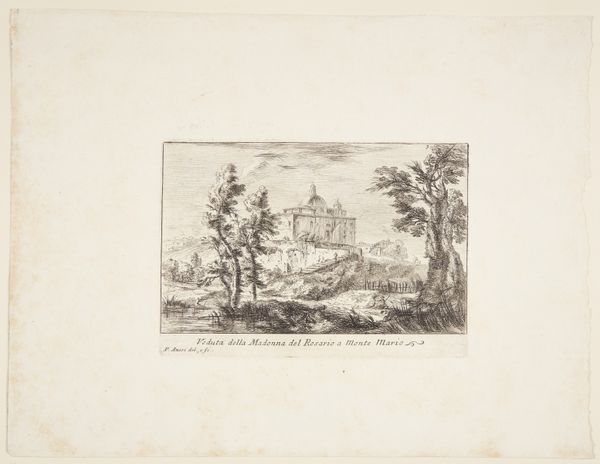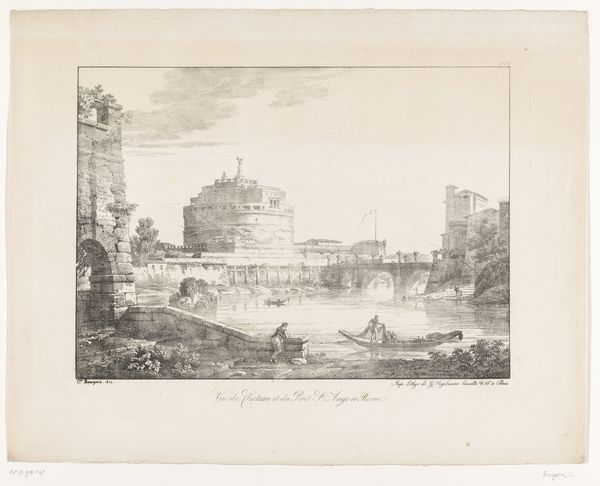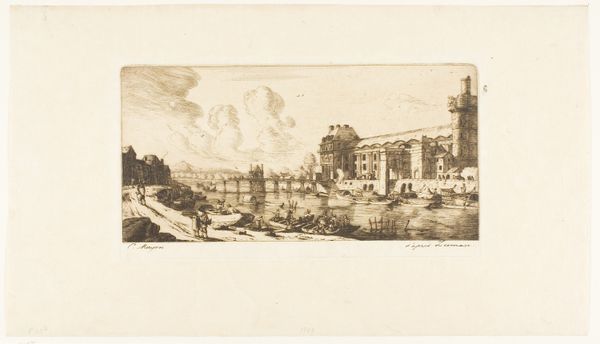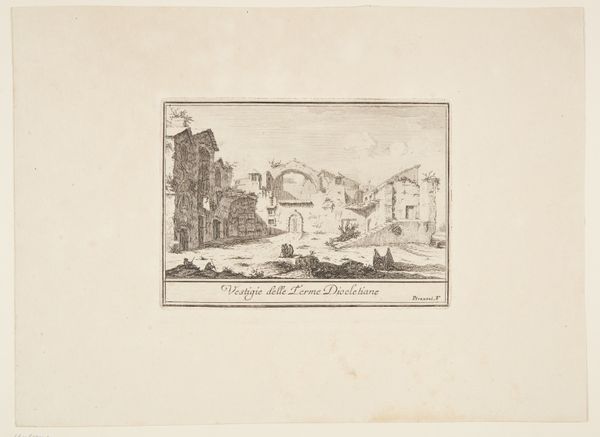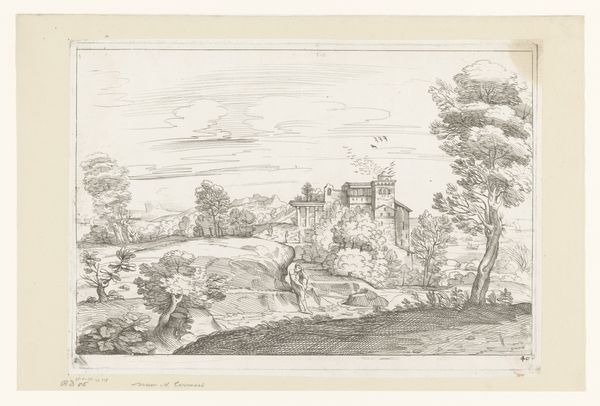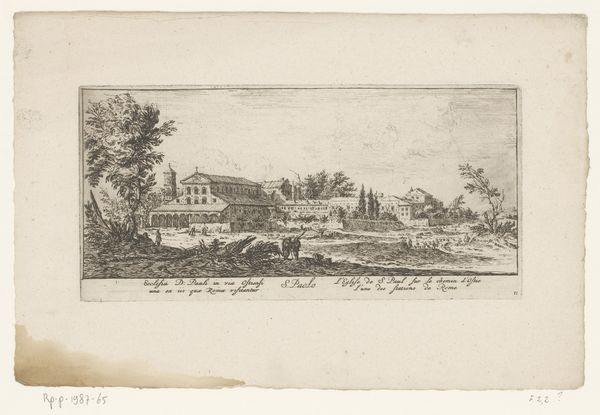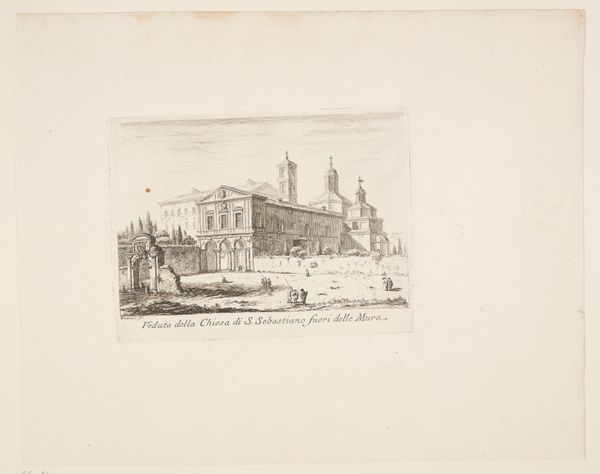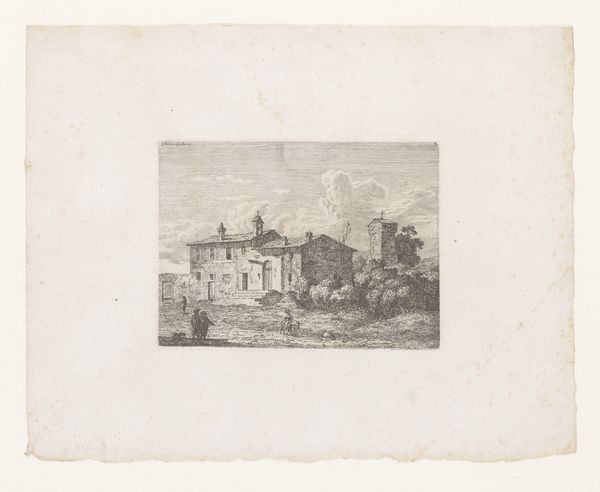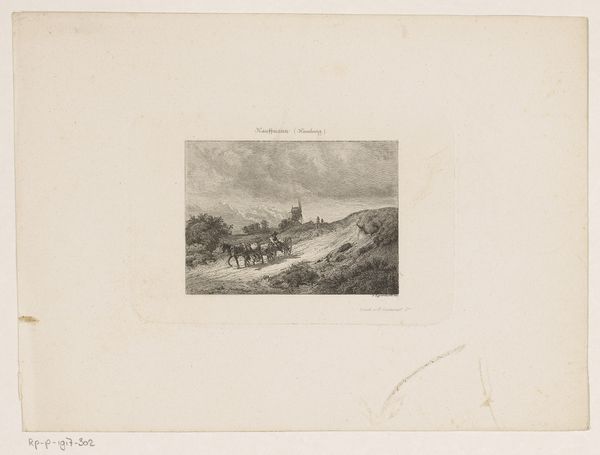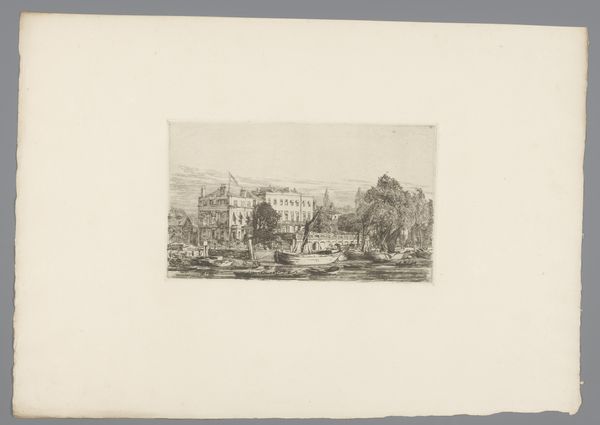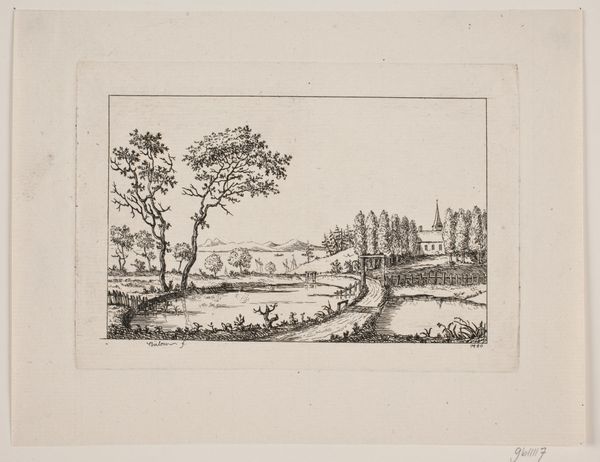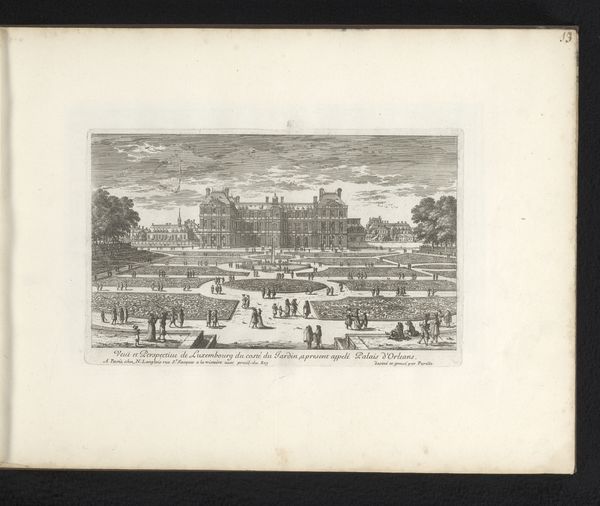
View of the Circus Maximus and the Palace of the Caesars on the Palatine 1741 - 1748
0:00
0:00
print, etching, engraving
#
baroque
# print
#
etching
#
landscape
#
history-painting
#
engraving
Dimensions: 113 mm (height) x 190 mm (width) (plademaal)
Editor: So, this is "View of the Circus Maximus and the Palace of the Caesars on the Palatine" by Giovanni Battista Piranesi, created sometime between 1741 and 1748. It's a print—an etching and engraving, actually. The detail is incredible! But there's also a melancholic mood hanging over the ruins. What do you see in this piece? Curator: I see layered narratives embedded within the ruins themselves. The Circus Maximus wasn’t just a place for entertainment; it was a stage for political display, social stratification, and even religious rituals. The Palace of the Caesars looms behind it, a symbol of imperial power. Piranesi's choice to depict them together is significant; what feelings do you associate with the crumbling structure? Editor: Loss, maybe? That empires, like people, don't last forever? The grandeur is definitely faded. Curator: Exactly! And notice how Piranesi places figures in the foreground, seemingly contemplating the scene. They become stand-ins for us, viewers reflecting on the weight of history. How does the perspective influence this sense of reflection? Editor: Because we are on the same level as them, instead of elevated like the Palace...I guess that makes us feel part of the scene and time. Not outside of it. Curator: Precisely. Consider also the baroque style – full of drama. Do you find it interesting that he uses an emotive style to depict a ruin? It makes us examine not only the decline of Rome, but also what collective memories remain as they erode over time. Editor: It is thought-provoking! I hadn't considered that style could influence the narrative in that way. Curator: Piranesi prompts us to explore our connection to history, challenging us to question what aspects we deem worth preserving – and how memory shapes identity across generations.
Comments
No comments
Be the first to comment and join the conversation on the ultimate creative platform.
